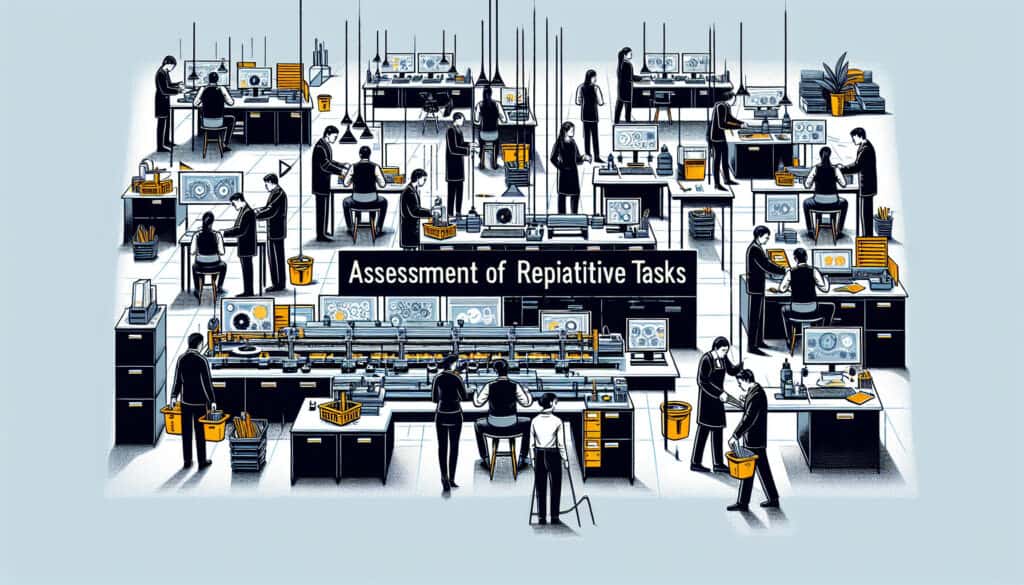英国健康与安全管理局(HSE)开发的一种工具,用于帮助评估重复性工作的风险。
- 方法: 客户与营销, 构思, 产品设计
重复性任务评估 (ART)

重复性任务评估 (ART)
- 持续改进, 人体工程学, 人为因素, 人因工程(HFE), 流程改进, 质量管理, 风险分析, 风险管理, 安全
目标
如何使用
- ART 工具是一个简单的核对表,可帮助用户评估与重复性任务相关的风险因素,如重复性、力度和姿势。它提供了一个数字分数,可用于对高风险任务进行优先排序。
优点
- 这是一个简单易用的工具,人体工程学专业知识有限的人也能使用,它提供了一种评估重复性工作风险的简单明了的方法。
缺点
- 这是一种筛选工具,可能不足以进行详细的人体工程学评估,评分系统具有主观性,而且可能不适用于所有类型的重复性工作。
类别
- 人体工程学, 人力资源, 风险管理
最适合:
- 评估重复性工作中上肢疾病的风险。
重复性任务评估(ART)方法广泛适用于制造、物流、医疗保健和装配线等行业,因为这些行业普遍存在重复性动作。在新产品或系统的设计阶段,这一工具尤其有用,因为在全面实施之前,了解人体工程学对工人的影响可以为修改工作提供指导。ART 有助于识别上肢疾病风险较高的任务,使团队能够优先考虑降低这些风险的干预措施。参与评估的人员通常包括人体工程学专家、职业健康专家和生产经理,即使他们具备基本的人体工程学知识,也能有效利用 ART 检查表。ART 提供的数字评分不仅能根据风险对任务进行排序,还能促进项目利益相关者之间就安全问题进行沟通。在汽车装配线上进行的案例研究表明,经过 ART 评估后,工伤事故显著减少,这说明 ART 在实际场景中的应用非常实用。ART 简单易用,对于希望改善工作场所人体工程学的企业来说,无需高级培训即可使用,是旨在提高工人安全和生产率的小型到大型企业的宝贵资源。
该方法的关键步骤
- 确定并列出正在执行的重复性任务。
- 评估每项任务在设定时间内发生的频率。
- 使用标准测量方法评估任务过程中的用力程度。
- 分析执行任务时所采用的姿势,注意任何笨拙的姿势。
- 根据重复、力度和姿势的评估标准给出数字分数。
- 计算每项任务的总分,以确定风险等级。
- 根据任务的总风险得分,确定任务的优先级,以便采取进一步行动或干预措施。
专业提示
- 通过收集直接参与重复性工作的人员的意见,在 ART 评估中纳入反馈回路;这可以揭示被忽视的风险因素并提高准确性。
- 利用 ART 评分系统来指导持续改进流程,确保对高风险任务进行优先干预,并对其进行长期监控,以评估所实施变革的效果。
- 将 ART 评估与观察方法和其他人体工程学工具结合起来,创建一种全面的方法,从定性和定量两方面解决风险因素,以加强干预策略。
历史背景
1986
(如果日期不详或不相关,例如 "流体力学",则对其显著出现的时间作了四舍五入的估计)。

相关文章
主生产计划(MPS)
大规模定制
营销漏斗
营销审计
MAPO 指数(医院病人的移动和援助)
制造资源计划(MRP II)